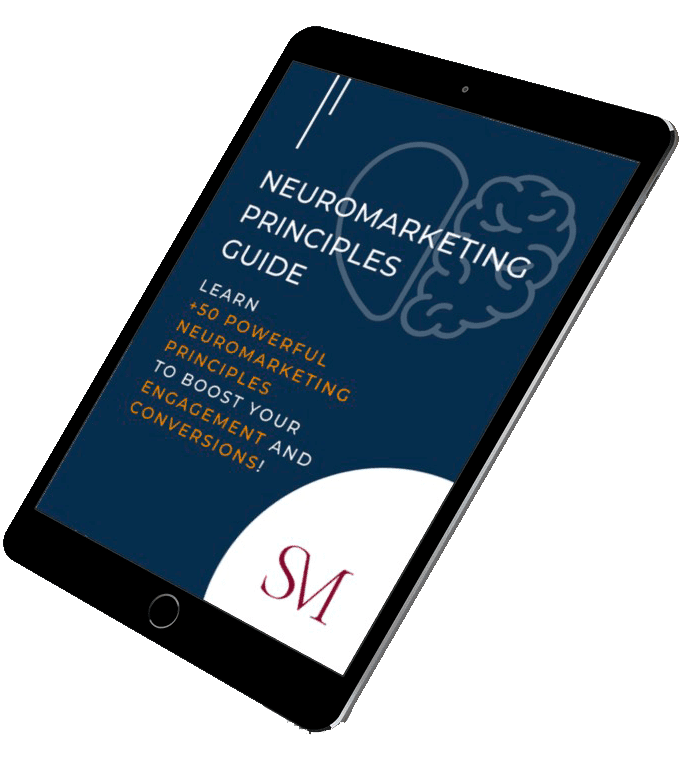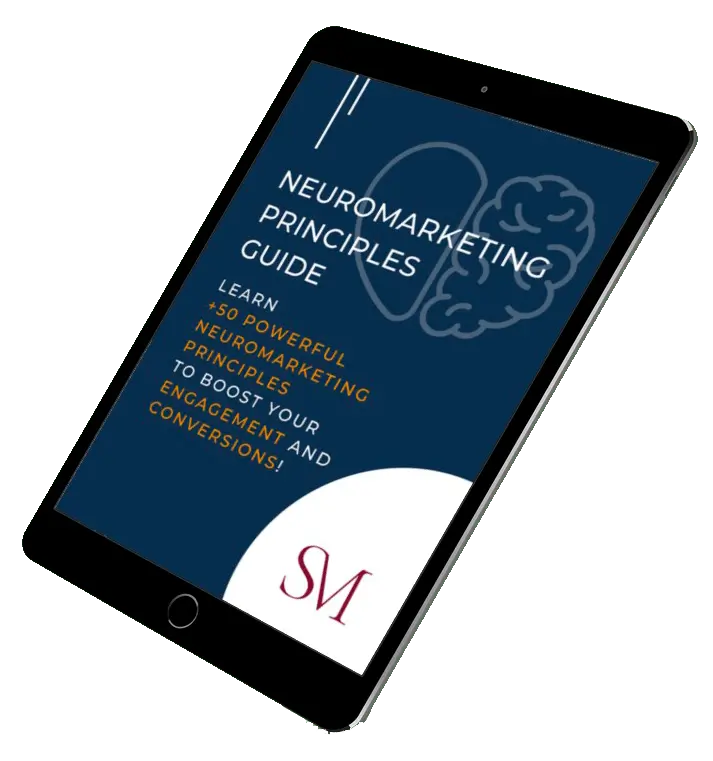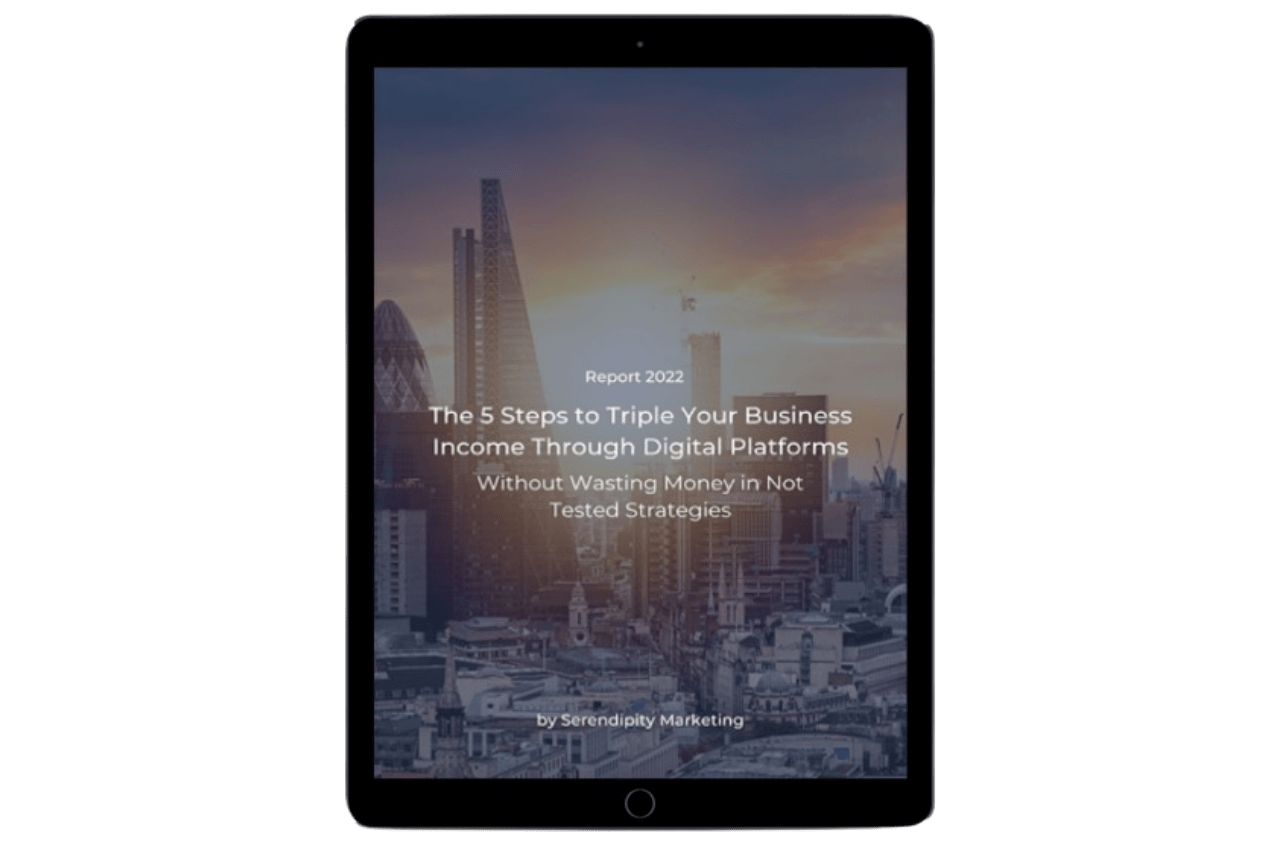As an eCommerce site owner, you're going to generate almost all of your income from your product pages. That's where people can add something to their cart and buy. And that’s why you’ll want to know these 5 eCommerce optimization tips that will help you increase your conversion rate almost straight away.
These are tips that if you are not using already, you’ll definitely want to use as if you are not using them, it means you’re leaving a lot of money on the table.
And also, the power of using all of them at the same time is what will skyrocket your eCommerce conversion rate as quickly as possible.
So, read until the end to make sure you know how to correctly implement them to start getting more sales almost straight away.
Hi there, and welcome back to Serendipity Marketing. We're a digital marketing agency with a mission to help small businesses grow by applying psychology to their marketing strategies.
Before we get started, please go ahead and follow us on LinkedIn, Facebook, or Instagram.
So, too many words have been said already and it’s time to dive straight into these powerful eCommerce optimization tips.
1. Metatags
The first of our eCommerce optimization tips is that you need to do is optimize your metatags. Your title tag and meta-description should break down what the product is, its benefits, and why people should buy it.
This is the stuff that people are going to read when they're doing their research on Google.
Any time you do a Google search, you see the title and the description. That's what Google pulls from your source code.
You want to make sure you have a really attractive title tag and a meta-description. Again, go over what your product is, why people should buy it, and the benefits of it.
Make sure the title and the description are highly appealing to induce people to stop and click on your web page. It is all about persuading users by giving them what they want to read to feel like your page is the one they want to click on.
Imagine this; when you search for something on Google, you type some keywords on the search bar, let’s say “Barbershop in London”. And after you click the search button, Google gives you a page with a few titles and descriptions to click on.
You probably start reading the first ones and they all seem good (in fact that’s why they are on the first page) but you don’t click on all of them, do you?
And you probably don’t even click always the first one. Why is that?
You get to click those that have the most compelling title and meta-description for yourself and what you are looking for.
And this is the same for the people you are aiming to target. You have to make your web product page titles and meta-description persuasive as much as possible to make them decide to click on your pages.
Also, you have to make sure you include the main keywords of your product within the title tag and meta-description.
This has a double benefit.
The first one is that, by doing it, it will be easier for Google to see your web pages and offer them among the results when people search for those keywords. It will basically help you rank your pages higher and get to the search engine's first page.
Secondly, when someone uses specific keywords to make their research on Google and sees the same keywords used in the title and meta-description they will resonate more with that web page and will be induced to click on it.
In a simplistic way, it basically goes like this: “Oh, they are the ones who most likely are going to provide the solution to my research as they are using the same words as I used to make the research.”
So yes, make sure you write compelling titles and meta-descriptions and always include the main keywords.
2. User Metrics
The second of our eCommerce optimization tips is that you need to focus on is user metrics. If someone is coming to your eCommerce product page and they bounce right off and go back to Google search, it tells Google they didn't find what they're looking for and your ranking should go down.
So, if you want them to stick around and ideally buy your product, then what you need to do is focus on the product.
Make sure the product description on the product page is highly appealing. Yes, we know, we want you to write a persuasive copy again. And this time to be host even more exhaustive.
But think about this; you are basically trying to convince someone who probably doesn’t know your brand to buy something that a lot of other similar businesses are offering.
So, the point is, why you?
And it is not just about how good the product is. It is about how the product is useful for your ideal clients, what they are looking for, and what they need to feel to decide that they can trust you and purchase what you offer.
So, if they can read the text and understand why they should be buying the product, great.
If they look at the images or a video review of it, it's high quality and they can see what they're going to get without being there in person, amazing.
If you have reviews from other people so they know if it's a good product for what they are looking for, just think about Amazon, again, amazing.
Think about when you go to an eCommerce site and you're buying a product, you want to see specific things. Make sure you include all of those within your eCommerce product page and that's how you increase your user metrics.
You have to deeply understand your ideal clients and get to know the reason why they would decide to buy your products and how they feel about that, alongside the way they behave when they search for similar products and why.
If you need help in deeply understanding your target audience and what motivates them to decide to purchase what you offer or bounce back, just click here to see how step-by-step Audience Analysis guide.
Learn +50 Powerful Neuromarketing Principles to Boost Your Engagement and Your Conversions

Bonus Tip
In our experience, we see lots of eCommerce stores where the reviews are listed at the bottom of the page. The reviews and testimonials have the goal to induce confidence and security and make users see that other people are using your product – meaning that your product is good.
It is basically similar to a digital word of mouth, isn’t it?
So, here is the hack; if you are a very well-known brand you can afford to keep your reviews at the bottom page as people already know who you are.
However, if your brand awareness is not that high, you will want to move your reviews and testimonials higher up on the page. You’ll want them to be seen among the very first things on the page, together with the product’s pictures and a video that shows it 360 degrees while explaining the benefits of getting it.
Doing so will increase your retention rate of users landing on the page and reduce the bounce rate as people will be most positively impacted and will understand better why the product is good and reliable.
3. Leverage headings
The third thing you need to do to rank higher is leverage headings. You can use H1 or H2 headings, both of them are good and are the measures that Google checks to scan your website and decide if it’s worth being shown on the first results page or not.
You can see headings all over sites like Amazon, Nike, Apple, and others. They are used to describe the product and are persuasive headings that provide kinds of highlights about the product.
Let’s remember that people don’t like to read too much, so they need to be induced to do it. This way, if they don’t read much they can skip through the page and get the best highlights with the headings and still understand why they should buy the product.
Also, if the heading is persuasive will induce them to stop and read the supporting copy below it where you will want to explain the heading topic in a more exhaustive and persuasive way to make them see how valuable the product is for them.
Here again, add keywords within the page. As mentioned above, this is how Google can scan your web pages and understand what they are about and if they are valuable for the people who are searching.
So, if you use keywords in your headings, it will be easier for Google to see your website and it will help you rank higher.
Alright, now before we move on with the next eCommerce optimization tips, have you ever thought about how much you should invest in marketing to generate constant business growth? Click the button below to calculate the ideal marketing budget you should allocate for higher visibility, engagement, and profit.
How much should you invest in Digital Marketing?
4. Include a feature list
The fourth thing you want to do is include a feature list. People often type product features on Google when they're looking for products.
And this should tell you already something more about how the human mind works. People are not very much interested in the product. They are interested in the benefit they get by purchasing a product. And that’s why they often use features as keywords for their searches.
So, you will want to have bullet point features along with the page, as this will help you rank for those terms and people will know exactly what they're going to get once they enter your page.
It helps drive more search traffic and it also helps to boost conversions.
5. Crosslink
Last but not least of our eCommerce optimization tips, make sure you crosslink. One of the most beautiful things about Amazon is anytime you go into a product page they start showing you other relevant products, things that you can add on, and things that are very similar that you can look at.
And this is something that you will want to use as well to make the user experience even better.
You can show relevant products users might be interested in and that they can add to the cart.
Here it’s important not to overwhelm people by showing too many options or products that are not related to the one they are viewing.
Think about it this way; if they are looking at a product page, what other product that you offer could be a great addition for them to achieve their benefits better and quicker?
Once you reply to this question, you will want to list those products as options they might be interested in as well.
Or, if you don’t have any relevant products yet, you might consider adding new relevant products to your eCommerce and watch your conversion increase with it.
If you need help with your eCommerce optimization or digital marketing to grow your business in terms of visibility, engagement, and profit, contact us today and speak with one of our digital marketing experts to see how we can build the bridge between the point you’re standing at right now and your goals.



